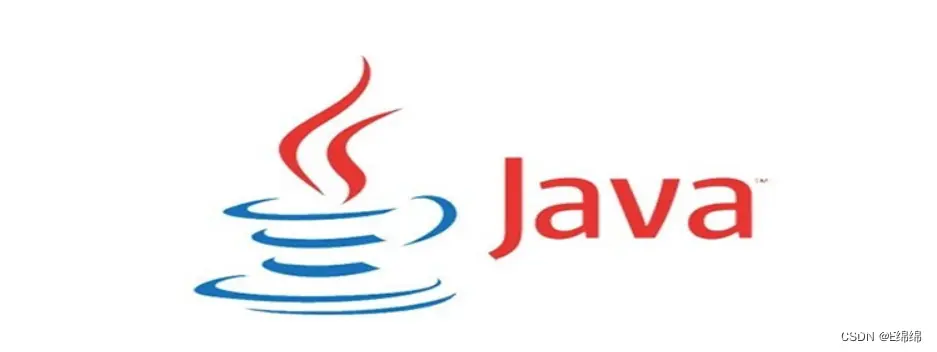【Java】解决Java报错:IOException during File Operations
CSDN 2024-07-07 12:35:01 阅读 68

文章目录
引言一、`IOException`的定义与概述1. 什么是`IOException`?2. `IOException`的常见触发场景3. 示例代码
二、解决方案1. 检查文件是否存在2. 使用`try-with-resources`语句3. 捕获和处理`IOException`4. 使用NIO进行文件操作
三、最佳实践1. 检查文件状态2. 使用`try-with-resources`语句3. 捕获并处理异常4. 使用NIO进行文件操作
四、案例分析案例一:处理配置文件读取案例二:多线程环境中的文件写入
五、总结
引言
在Java编程中,<code>IOException是一种常见的检查型异常,通常在进行文件操作时发生。它表示输入或输出操作失败或中断,例如文件无法读取或写入。正确处理IOException对于确保文件操作的稳定性和正确性至关重要。本文将深入探讨IOException的产生原因,并提供具体的解决方案和最佳实践,帮助开发者更好地理解和解决这个问题。
一、IOException的定义与概述
1. 什么是IOException?
IOException是Java标准库中的一种检查型异常,继承自Exception。当发生输入或输出操作失败或中断时,就会抛出这种异常。例如,文件未找到、文件无法读取、网络连接中断等情况都会导致IOException。
2. IOException的常见触发场景
在进行文件操作时,IOException可能会在以下几种情况下触发:
文件未找到(FileNotFoundException)。无法读取或写入文件。文件操作过程中出现I/O错误。网络I/O操作失败。
3. 示例代码
import java.io.BufferedReader;
import java.io.FileReader;
import java.io.IOException;
public class Main {
public static void main(String[] args) {
try (BufferedReader reader = new BufferedReader(new FileReader("nonexistentfile.txt"))) {
String line = reader.readLine();
System.out.println(line);
} catch (IOException e) {
e.printStackTrace(); // 触发IOException
}
}
}
在上述代码中,试图读取一个不存在的文件会抛出IOException。
二、解决方案
1. 检查文件是否存在
在进行文件操作之前,检查文件是否存在,可以有效避免FileNotFoundException:
import java.io.File;
public class Main {
public static void main(String[] args) {
File file = new File("nonexistentfile.txt");
if (file.exists()) {
System.out.println("File exists.");
} else {
System.err.println("File does not exist.");
}
}
}
通过检查文件是否存在,可以避免因文件不存在导致的异常。
2. 使用try-with-resources语句
在进行文件操作时,使用try-with-resources语句可以确保资源被正确关闭,避免资源泄漏,并有效处理IOException:
import java.io.BufferedReader;
import java.io.FileReader;
import java.io.IOException;
public class Main {
public static void main(String[] args) {
try (BufferedReader reader = new BufferedReader(new FileReader("file.txt"))) {
String line;
while ((line = reader.readLine()) != null) {
System.out.println(line);
}
} catch (IOException e) {
e.printStackTrace();
}
}
}
通过使用try-with-resources语句,可以确保在操作完成后自动关闭文件资源。
3. 捕获和处理IOException
在进行文件操作时,使用try-catch块捕获IOException,并提供有意义的错误消息或采取相应的措施:
import java.io.BufferedWriter;
import java.io.FileWriter;
import java.io.IOException;
public class Main {
public static void main(String[] args) {
try (BufferedWriter writer = new BufferedWriter(new FileWriter("output.txt"))) {
writer.write("Hello, World!");
} catch (IOException e) {
System.err.println("Error writing to file: " + e.getMessage());
}
}
}
通过捕获异常并提供有意义的错误消息,可以帮助用户或开发者快速定位和解决问题。
4. 使用NIO进行文件操作
Java NIO(非阻塞I/O)提供了更为灵活和高效的文件操作方法,可以有效处理大文件和高并发场景:
import java.io.IOException;
import java.nio.file.Files;
import java.nio.file.Path;
import java.nio.file.Paths;
public class Main {
public static void main(String[] args) {
Path path = Paths.get("file.txt");
try {
Files.lines(path).forEach(System.out::println);
} catch (IOException e) {
System.err.println("Error reading file: " + e.getMessage());
}
}
}
通过使用NIO,可以简化文件操作并提高性能。
三、最佳实践
1. 检查文件状态
在进行文件操作之前,检查文件是否存在、是否可读或可写,确保文件状态符合预期,避免异常。
2. 使用try-with-resources语句
在进行文件操作时,使用try-with-resources语句,确保资源被正确关闭,避免资源泄漏,并有效处理IOException。
3. 捕获并处理异常
在进行文件操作时,使用try-catch块捕获并处理IOException,提供有意义的错误消息或采取相应的措施。
4. 使用NIO进行文件操作
在处理大文件或高并发场景时,尽量使用Java NIO提供的文件操作方法,提高性能和灵活性。
四、案例分析
案例一:处理配置文件读取
某个Java应用程序在读取配置文件时频繁抛出IOException,导致配置加载失败。通过分析发现,问题出在未对配置文件的存在性进行有效验证。解决方法是在读取配置文件之前,检查文件是否存在:
import java.io.BufferedReader;
import java.io.File;
import java.io.FileReader;
import java.io.IOException;
public class Main {
public static void main(String[] args) {
File configFile = new File("config.properties");
if (configFile.exists()) {
try (BufferedReader reader = new BufferedReader(new FileReader(configFile))) {
String line;
while ((line = reader.readLine()) != null) {
System.out.println(line);
}
} catch (IOException e) {
System.err.println("Error reading config file: " + e.getMessage());
}
} else {
System.err.println("Config file does not exist.");
}
}
}
通过检查配置文件的存在性,避免了文件不存在导致的异常。
案例二:多线程环境中的文件写入
某个Java应用程序在多线程环境下进行文件写入时频繁抛出IOException,导致数据丢失。经过分析发现,问题出在多个线程同时访问和修改同一个文件。解决方法是使用线程安全的方式进行文件写入:
import java.io.BufferedWriter;
import java.io.FileWriter;
import java.io.IOException;
import java.util.concurrent.locks.Lock;
import java.util.concurrent.locks.ReentrantLock;
public class Main {
private static final Lock lock = new ReentrantLock();
public static void main(String[] args) {
Runnable task = () -> {
lock.lock();
try (BufferedWriter writer = new BufferedWriter(new FileWriter("output.txt", true))) {
writer.write(Thread.currentThread().getName() + ": Hello, World!\n");
} catch (IOException e) {
System.err.println("Error writing to file: " + e.getMessage());
} finally {
lock.unlock();
}
};
Thread thread1 = new Thread(task);
Thread thread2 = new Thread(task);
thread1.start();
thread2.start();
}
}
通过使用锁机制,确保在多线程环境下安全地进行文件写入。
五、总结
IOException是Java中常见的检查型异常,在进行文件操作时尤其容易发生。本文详细介绍了其产生原因,并提供了多种解决方案,包括检查文件状态、使用try-with-resources语句、捕获并处理异常以及使用NIO进行文件操作。通过遵循最佳实践,开发者可以有效地避免和处理这种异常,提高代码的健壮性和可靠性。
上一篇: MSYS2 MSYS、MINGW32、MINGW64、UCRT64、CLANGARM64、CLANG64不同子系统环境之间的区别
下一篇: html旅游网站设计与实现——绿色古典旅游景区 HTML+CSS+JavaScript
本文标签
声明
本文内容仅代表作者观点,或转载于其他网站,本站不以此文作为商业用途
如有涉及侵权,请联系本站进行删除
转载本站原创文章,请注明来源及作者。